The document discusses the evolving landscape of television and the battle for dominance in the living room. It notes that while content remains important, consumers now control what, when, and how they watch television across various devices. Key players discussed include Google/YouTube which has positioned itself as a major online video platform, Facebook which is pursuing video aggressively and could become the next largest online video property, and Amazon which has integrated video streaming and purchases through its Fire TV platform. The future of television will likely involve various business models co-existing and companies competing to provide content and services that best meet consumer preferences around viewing, searching, sharing, and buying behaviors.
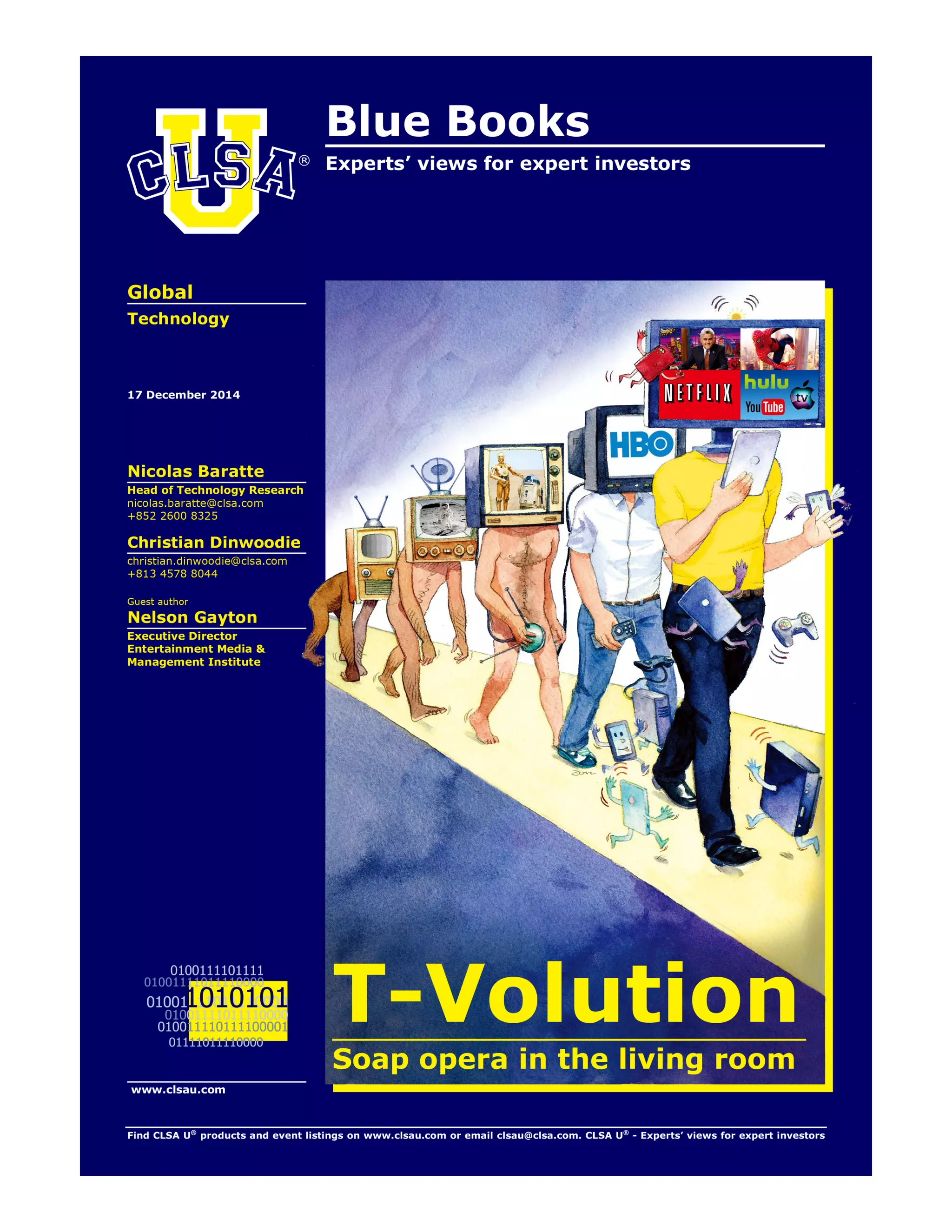
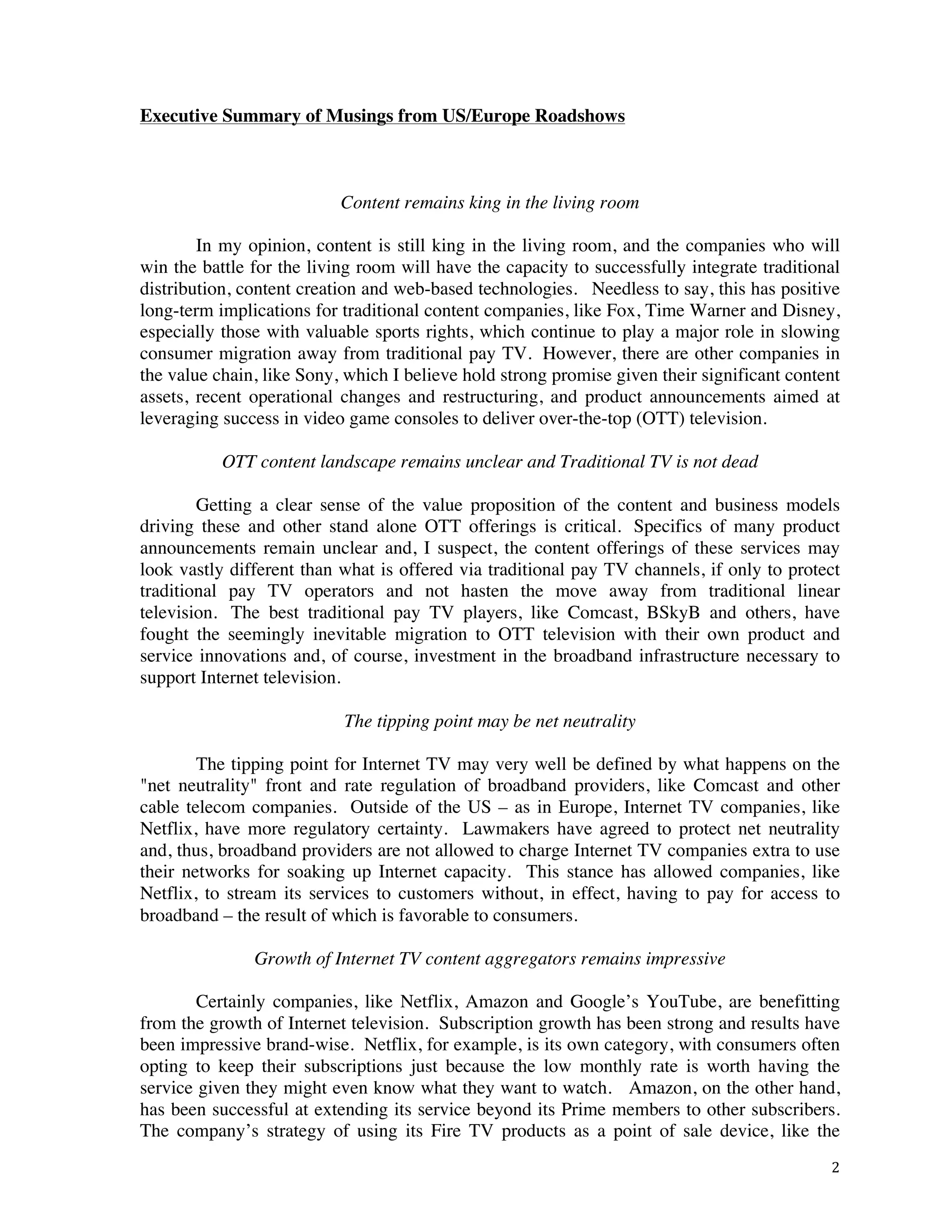
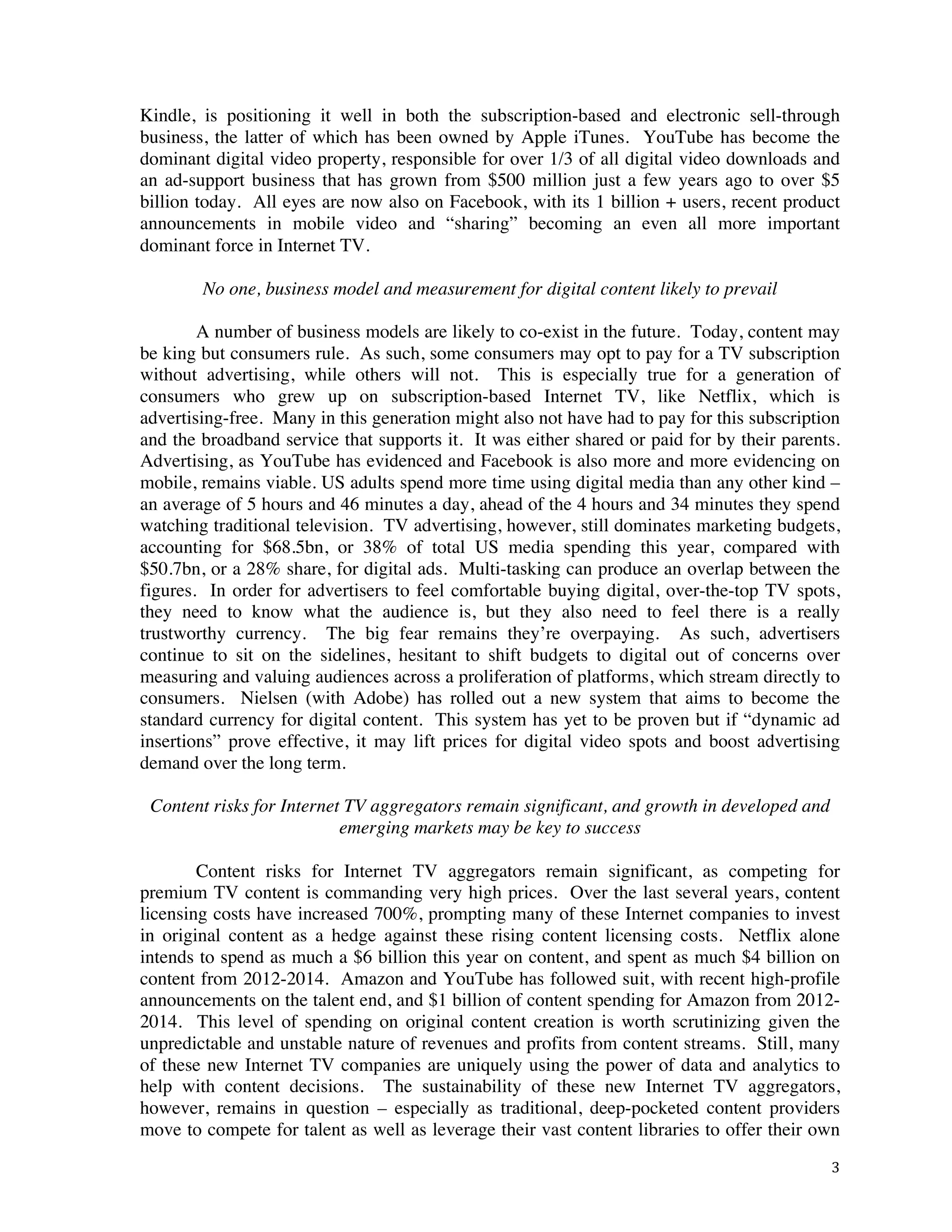
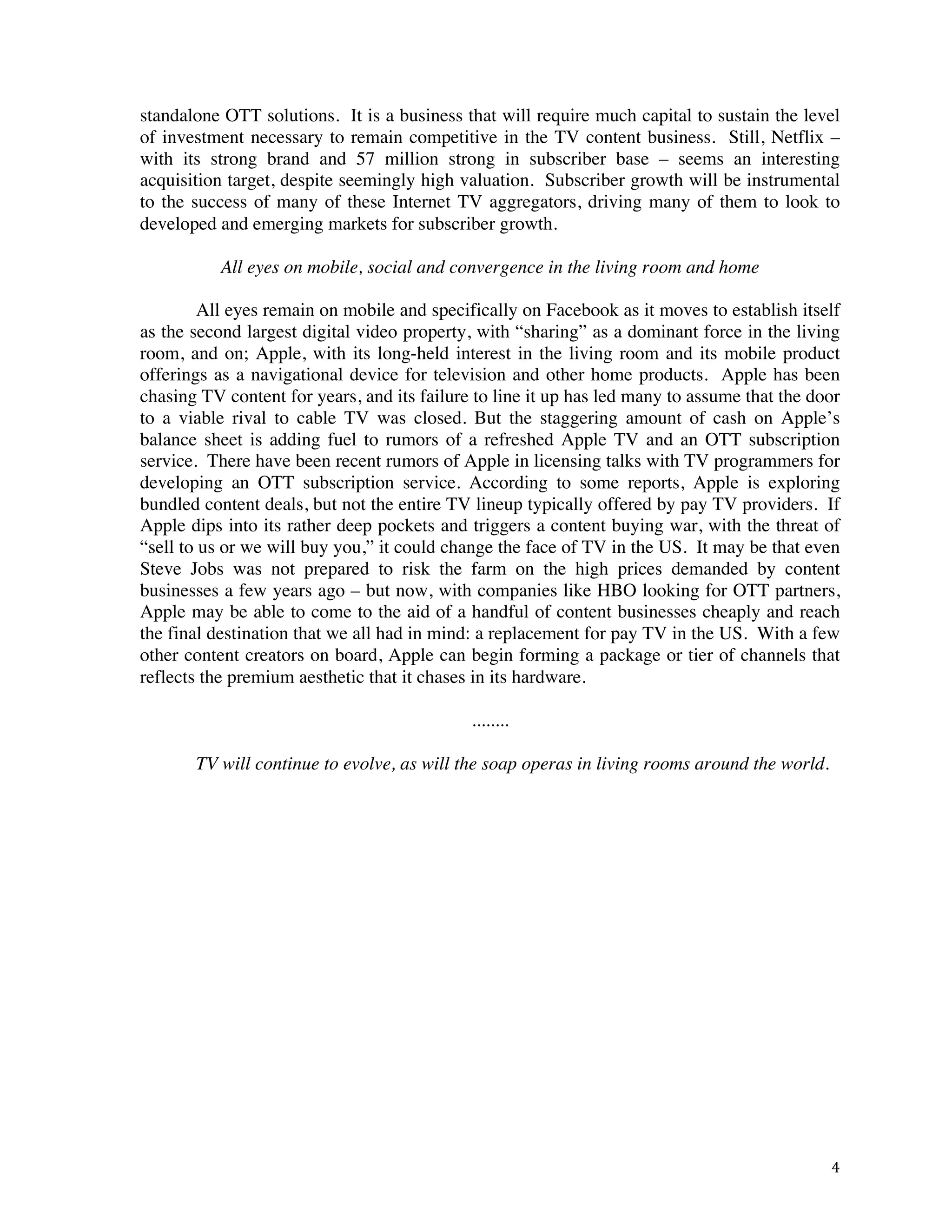

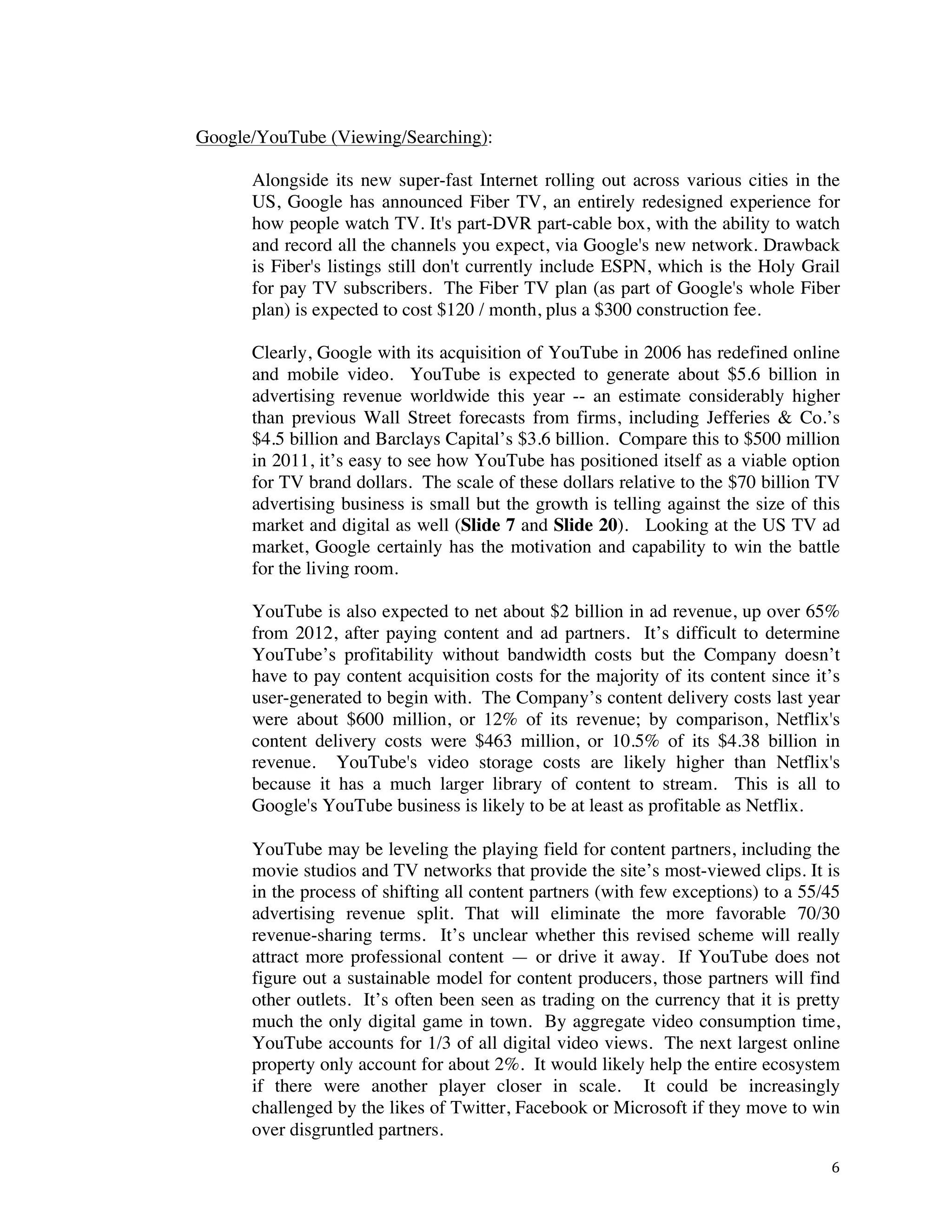
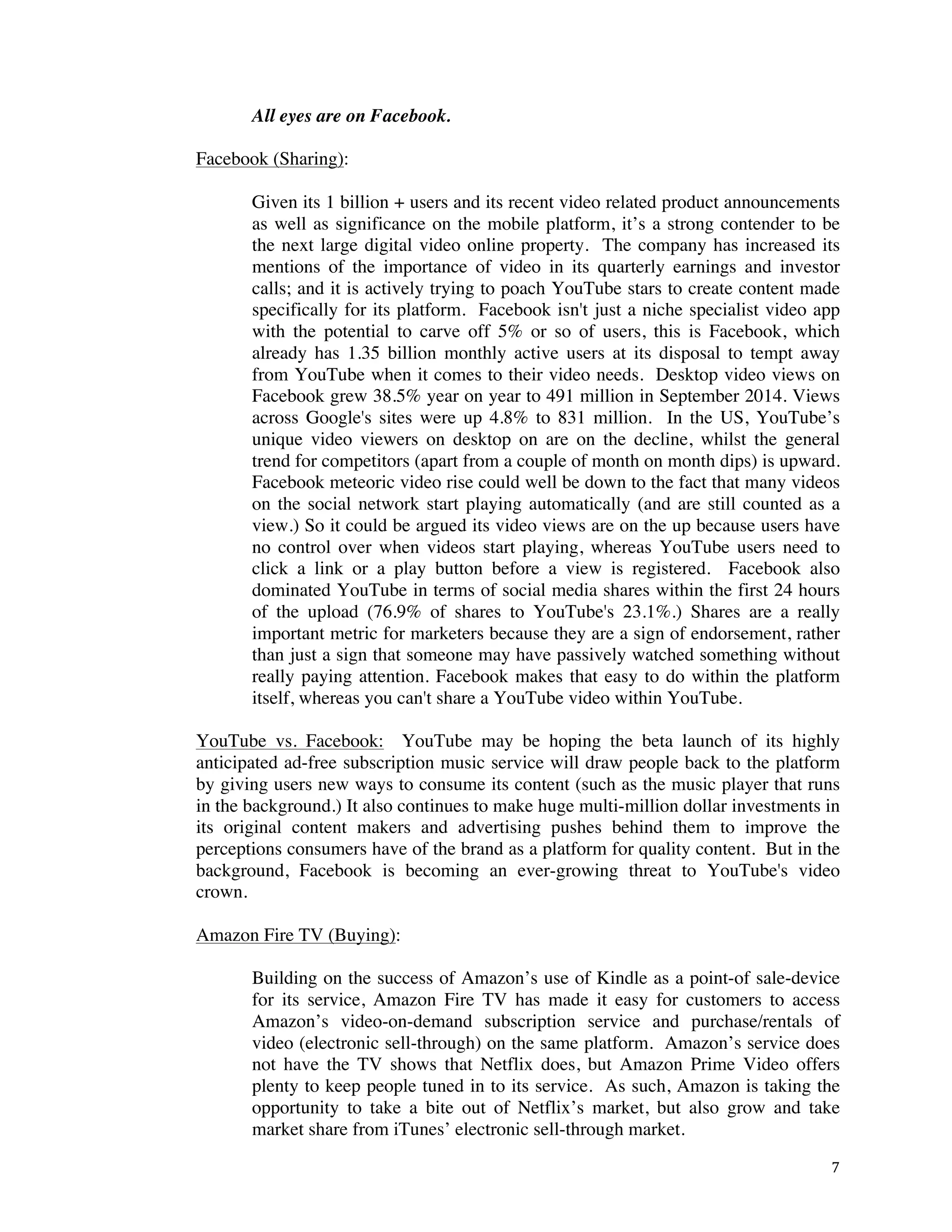
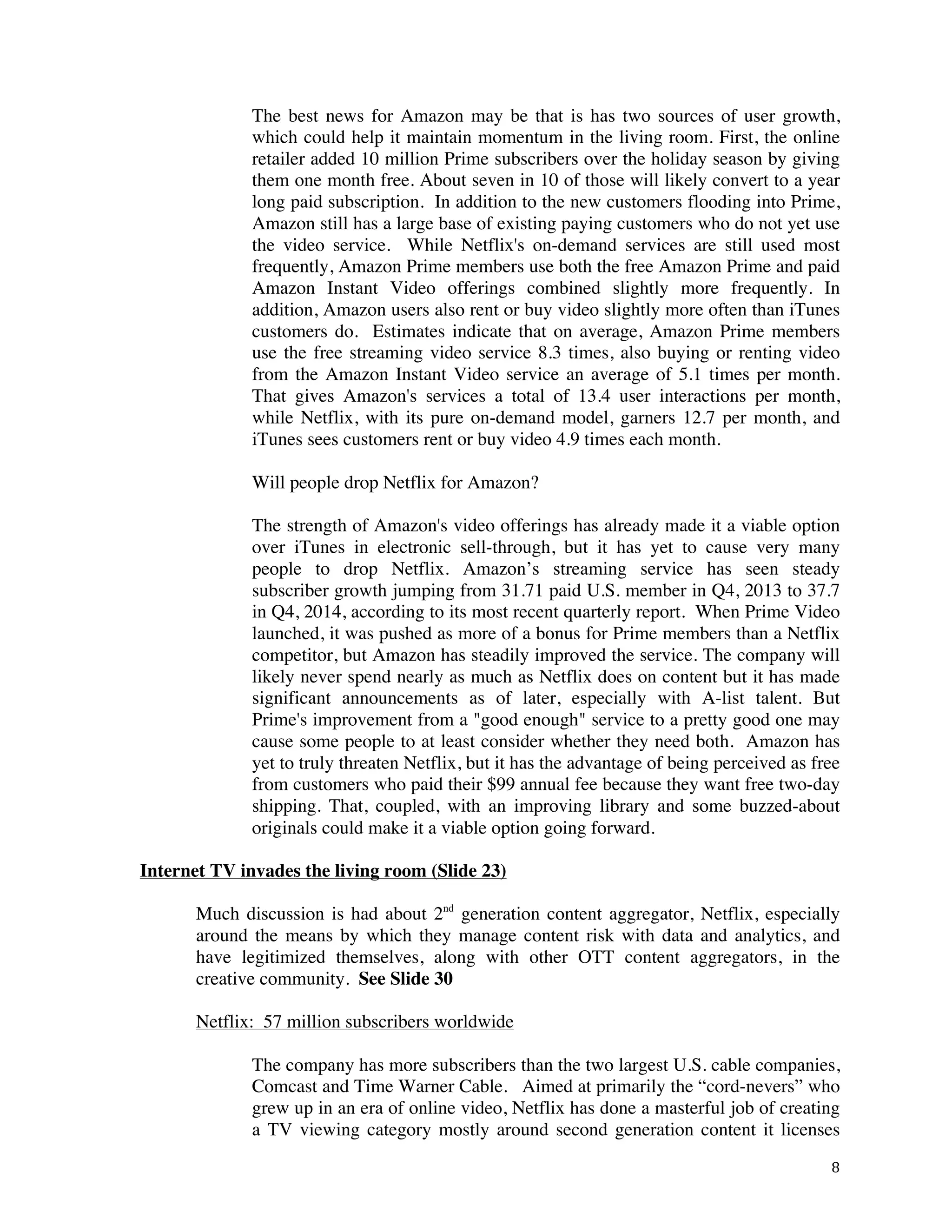
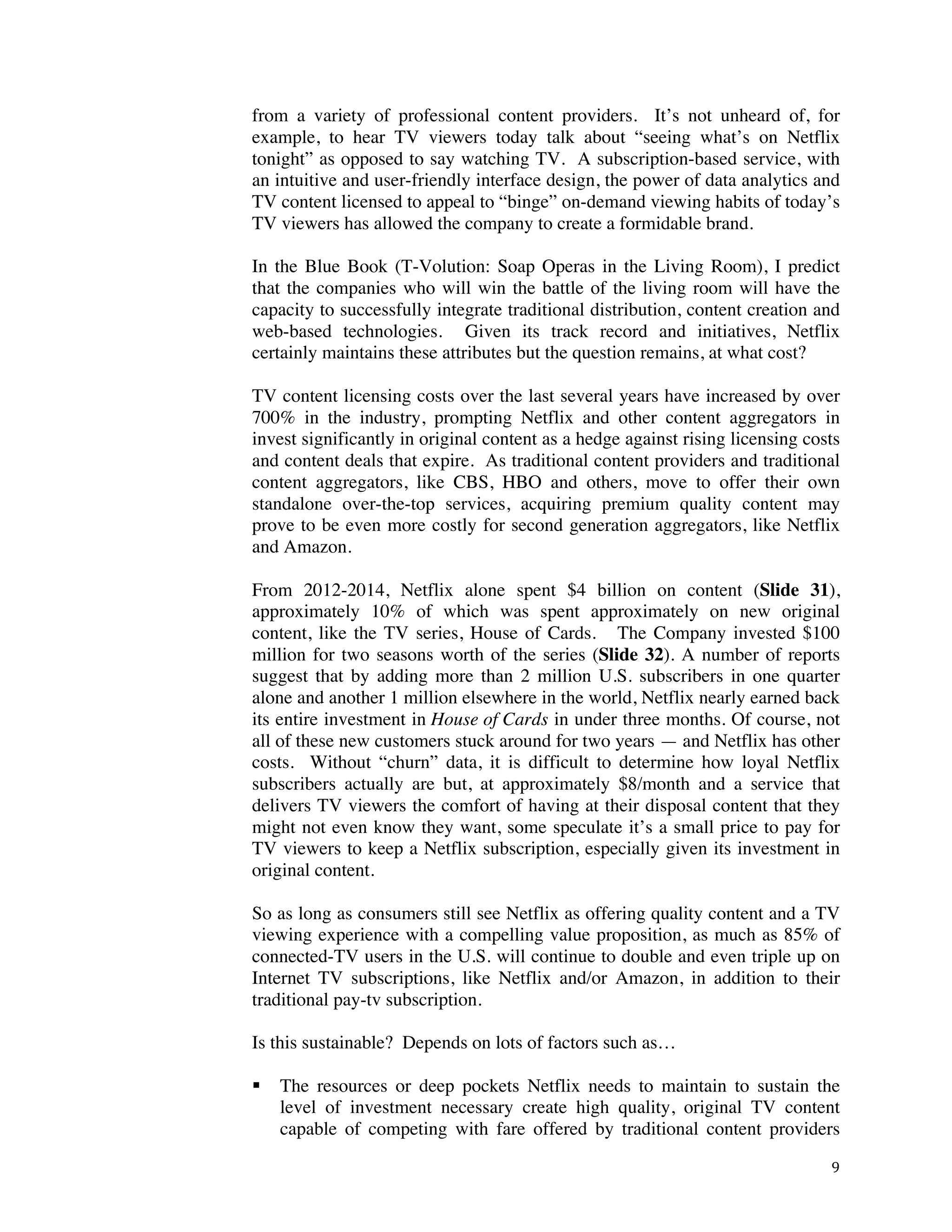

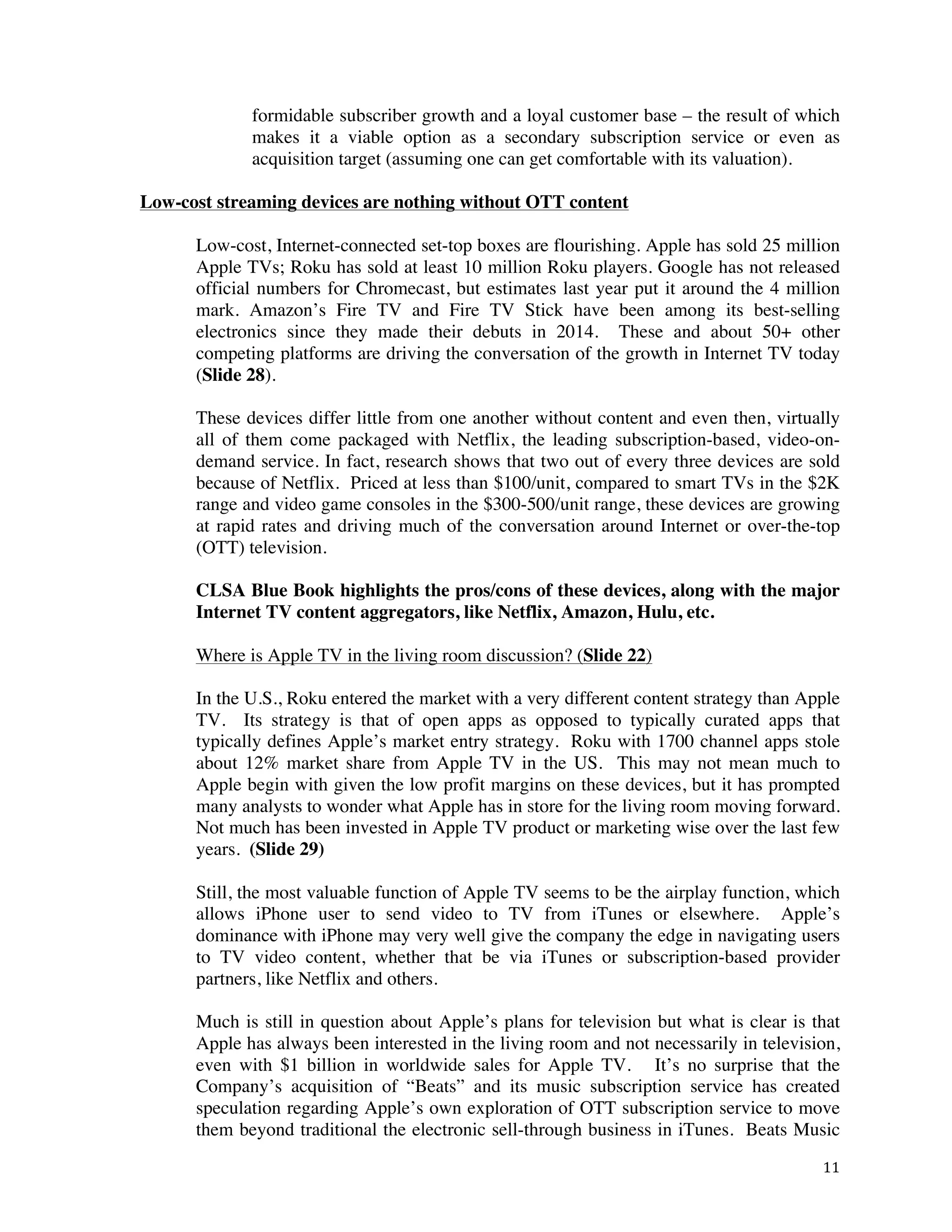

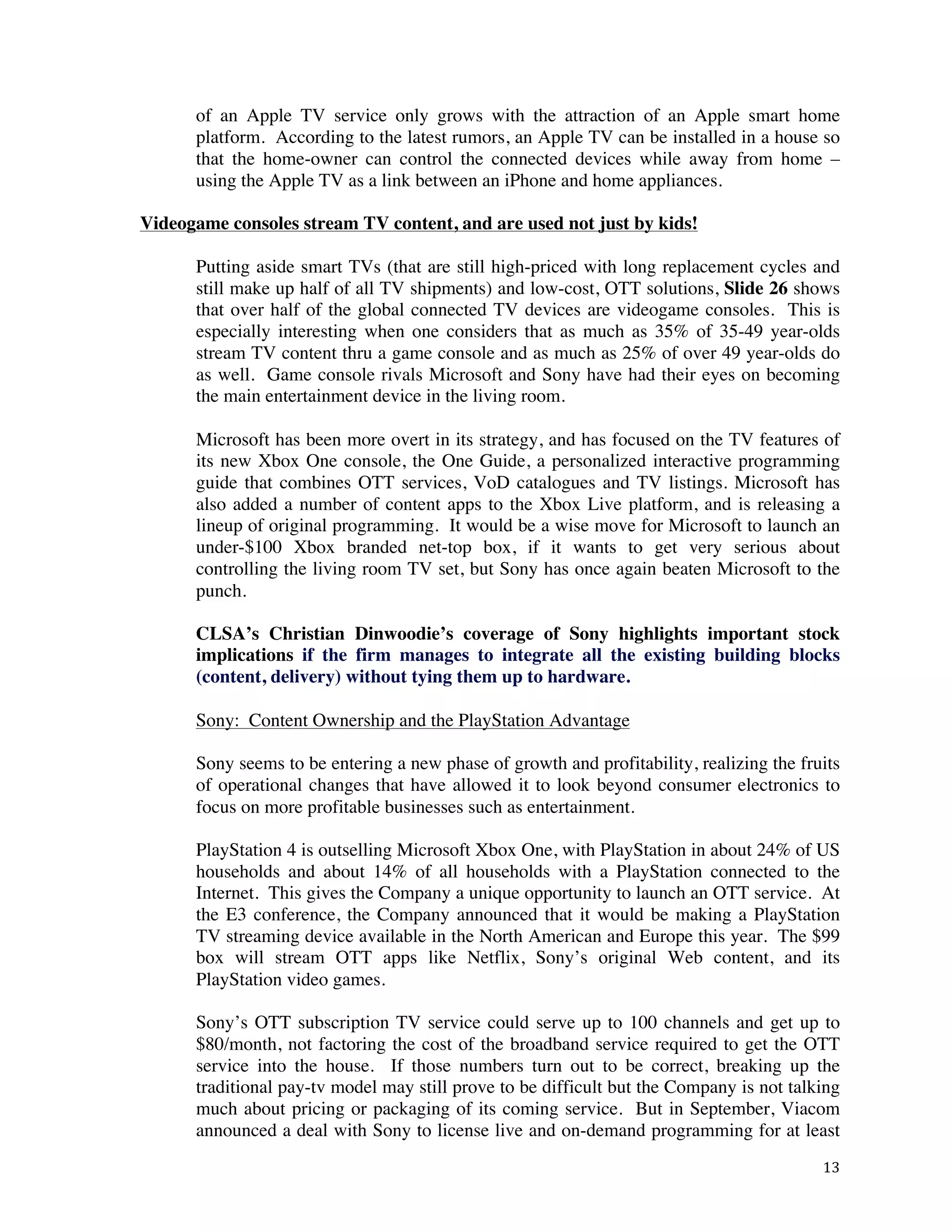
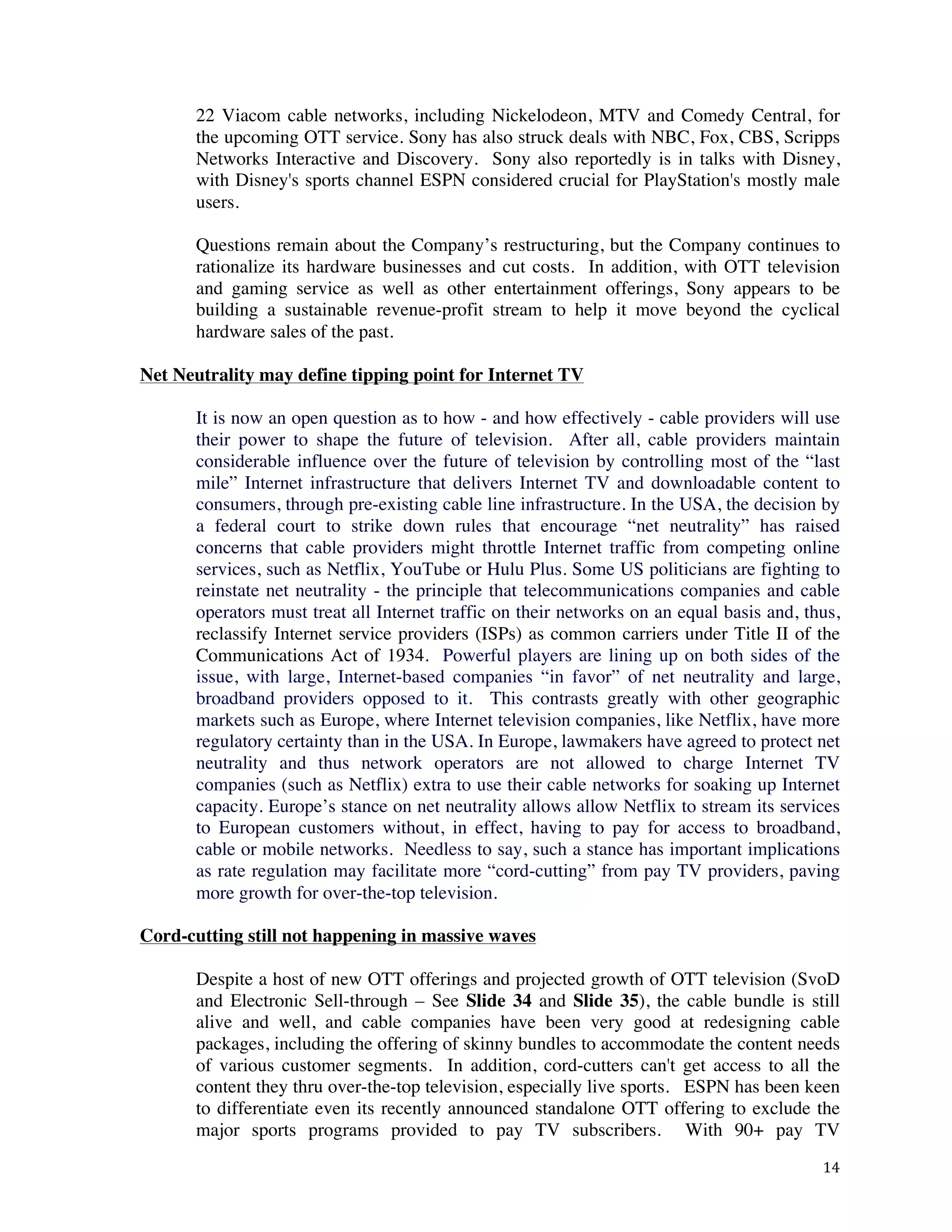
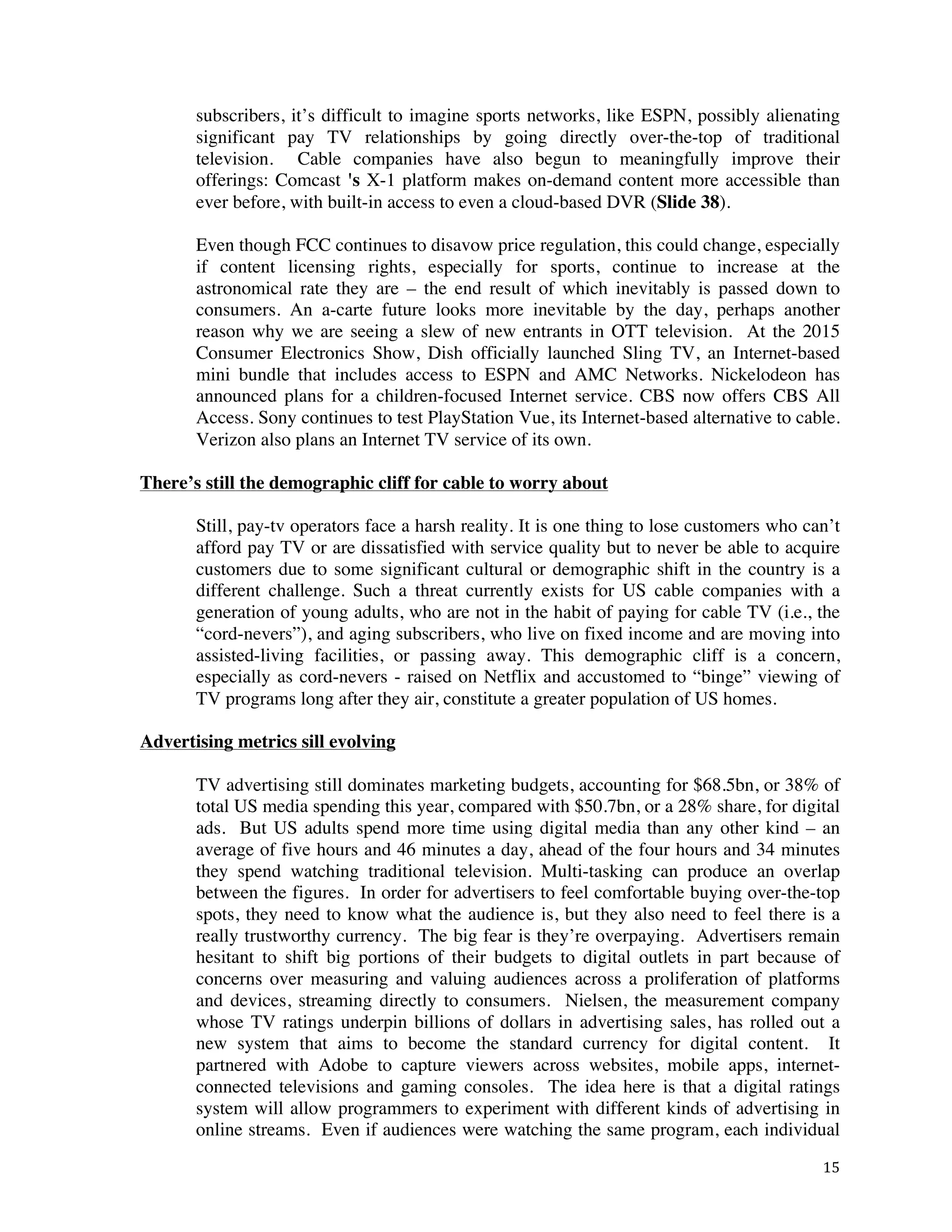
![! 16!
might see very different ads, not just based off demographics and where he lives, but
who he is, what he has bought before and also potentially what else he is doing when
he browses [the Internet]. These “dynamic ad insertions” may lift prices for digital
video spots and boost advertising demand over the long term.](https://image.slidesharecdn.com/92c5e6b2-52e8-4212-9bfe-46e67fb4979e-151013204856-lva1-app6892/75/Musings_CLSARoadshows-16-2048.jpg)